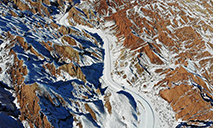Management, protection improved in Xinjiang's Ganjia Lake forest region

Staff members patrol the Ganjia Lake forest region in Wusu City of northwest China's Xinjiang Uygur Autonomous Region, Dec. 4, 2021. As winter approaches, authorities have been paying more attention to forest fire prevention in the Ganjia Lake forest region in the west of Junggar Basin. Forest rangers have also stepped up their patrolling efforts. In the Ganjia Lake forest region, there are 18 forest management and protection stations that are responsible for forest fireproofing, management of forest resources and grassland and wild animal protection. With improved transportation, staff members can now monitor a considerably larger area of woodland. The Ganjia Lake forest region, with an area of roughly 3,920,000 mu (about 2613.3 square kilometers) and over 110 plant species, serves as an important ecological protective screen for preventing land desertification. (Xinhua/Bai Zhiqiang)
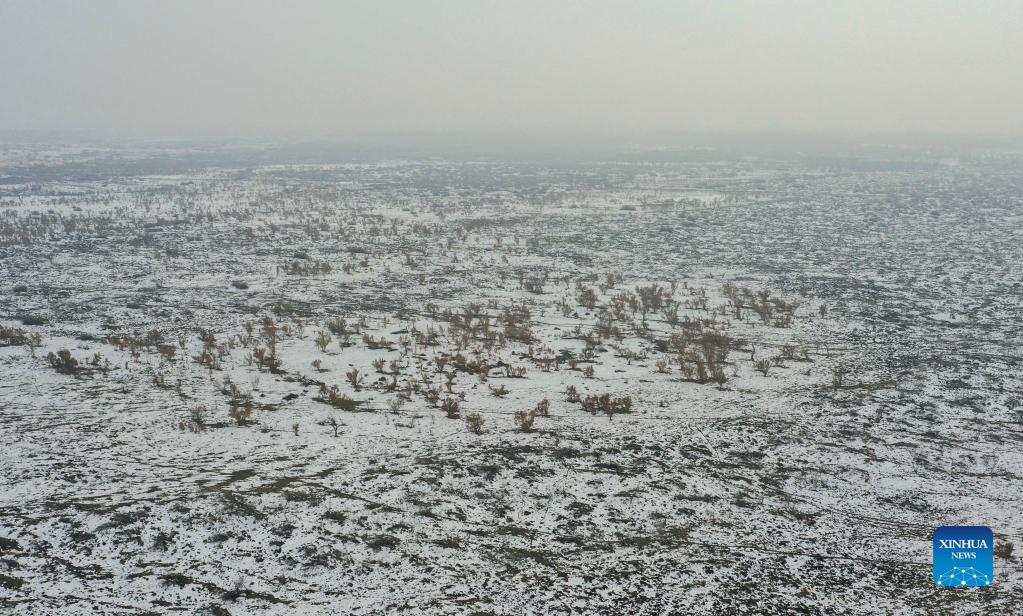
Aerial photo taken on Dec. 4, 2021 shows a view of the Ganjia Lake forest region in Wusu City of northwest China's Xinjiang Uygur Autonomous Region. As winter approaches, authorities have been paying more attention to forest fire prevention in the Ganjia Lake forest region in the west of Junggar Basin. Forest rangers have also stepped up their patrolling efforts. In the Ganjia Lake forest region, there are 18 forest management and protection stations that are responsible for forest fireproofing, management of forest resources and grassland and wild animal protection. With improved transportation, staff members can now monitor a considerably larger area of woodland. The Ganjia Lake forest region, with an area of roughly 3,920,000 mu (about 2613.3 square kilometers) and over 110 plant species, serves as an important ecological protective screen for preventing land desertification. (Xinhua/Zhao Ge)
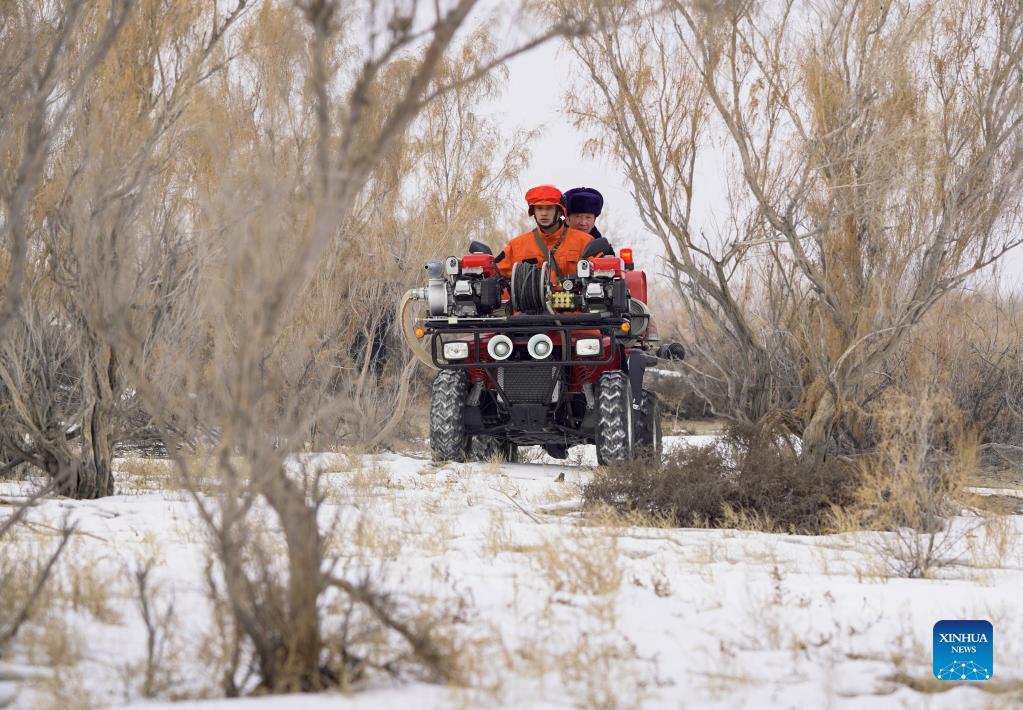
A staff member from a forest management and protection station, along with an emergency handling team of the Ganjia Lake forest region, patrol the Ganjia Lake forest region in Wusu City of northwest China's Xinjiang Uygur Autonomous Region, Dec. 4, 2021. As winter approaches, authorities have been paying more attention to forest fire prevention in the Ganjia Lake forest region in the west of Junggar Basin. Forest rangers have also stepped up their patrolling efforts. In the Ganjia Lake forest region, there are 18 forest management and protection stations that are responsible for forest fireproofing, management of forest resources and grassland and wild animal protection. With improved transportation, staff members can now monitor a considerably larger area of woodland. The Ganjia Lake forest region, with an area of roughly 3,920,000 mu (about 2613.3 square kilometers) and over 110 plant species, serves as an important ecological protective screen for preventing land desertification. (Xinhua/Bai Zhiqiang)
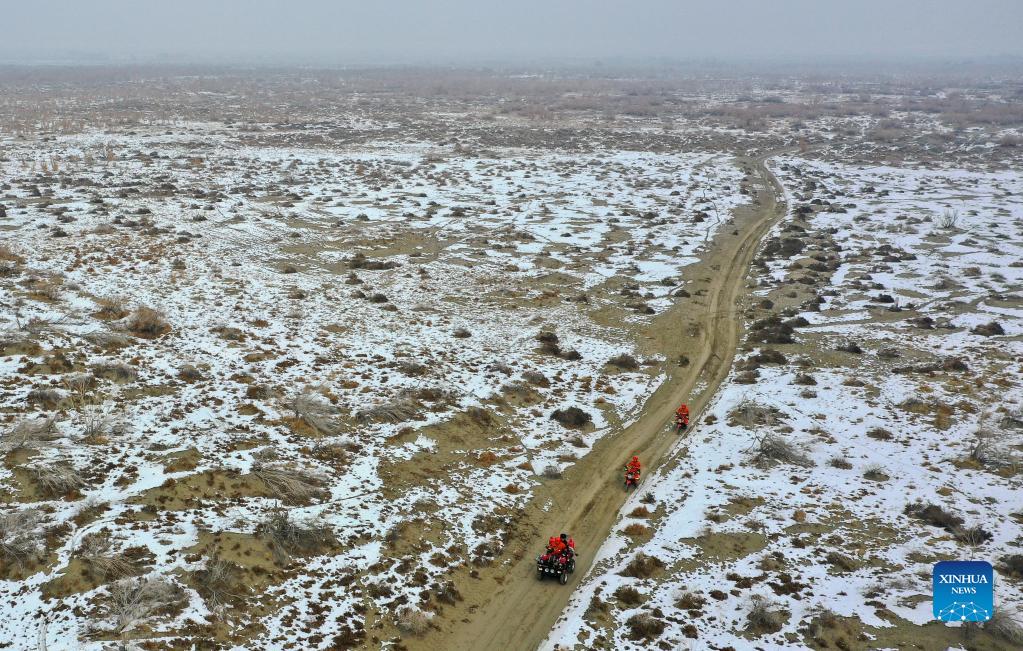
Aerial photo taken on Dec. 4, 2021 shows staff members patrolling the Ganjia Lake forest region in Wusu City of northwest China's Xinjiang Uygur Autonomous Region. As winter approaches, authorities have been paying more attention to forest fire prevention in the Ganjia Lake forest region in the west of Junggar Basin. Forest rangers have also stepped up their patrolling efforts. In the Ganjia Lake forest region, there are 18 forest management and protection stations that are responsible for forest fireproofing, management of forest resources and grassland and wild animal protection. With improved transportation, staff members can now monitor a considerably larger area of woodland. The Ganjia Lake forest region, with an area of roughly 3,920,000 mu (about 2613.3 square kilometers) and over 110 plant species, serves as an important ecological protective screen for preventing land desertification. (Xinhua/Zhao Ge)
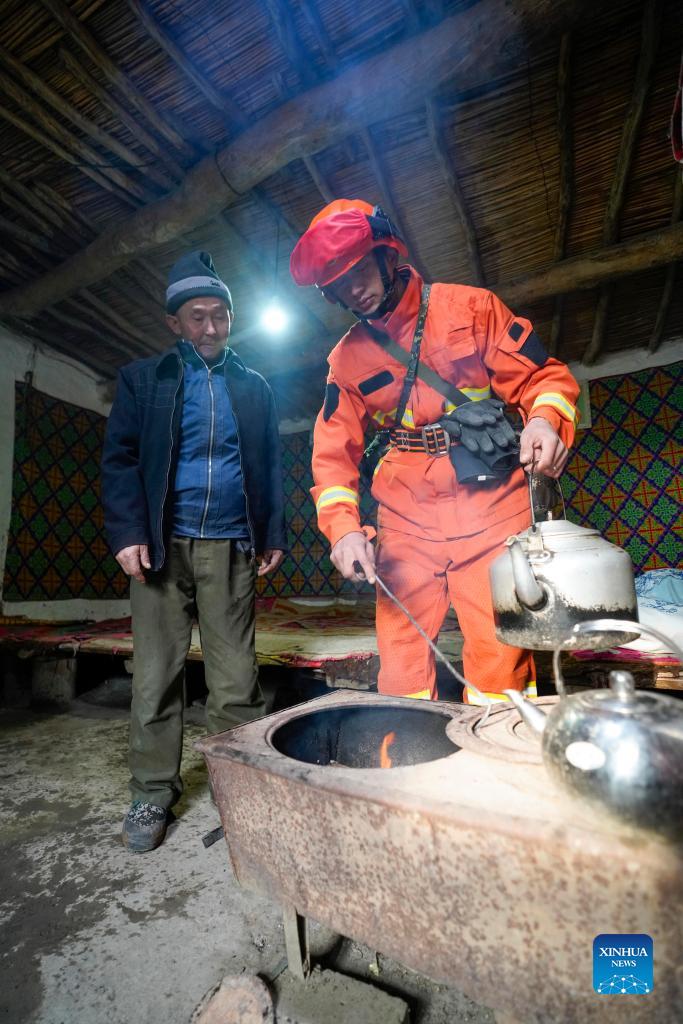
A member (R) from an emergency handling team of the Ganjia Lake forest region explains to a villager on preventing fire from spreading out in Mafangzi Village of Wusu City, northwest China's Xinjiang Uygur Autonomous Region, Dec. 4, 2021. As winter approaches, authorities have been paying more attention to forest fire prevention in the Ganjia Lake forest region in the west of Junggar Basin. Forest rangers have also stepped up their patrolling efforts. In the Ganjia Lake forest region, there are 18 forest management and protection stations that are responsible for forest fireproofing, management of forest resources and grassland and wild animal protection. With improved transportation, staff members can now monitor a considerably larger area of woodland. The Ganjia Lake forest region, with an area of roughly 3,920,000 mu (about 2613.3 square kilometers) and over 110 plant species, serves as an important ecological protective screen for preventing land desertification. (Xinhua/Zhao Ge)
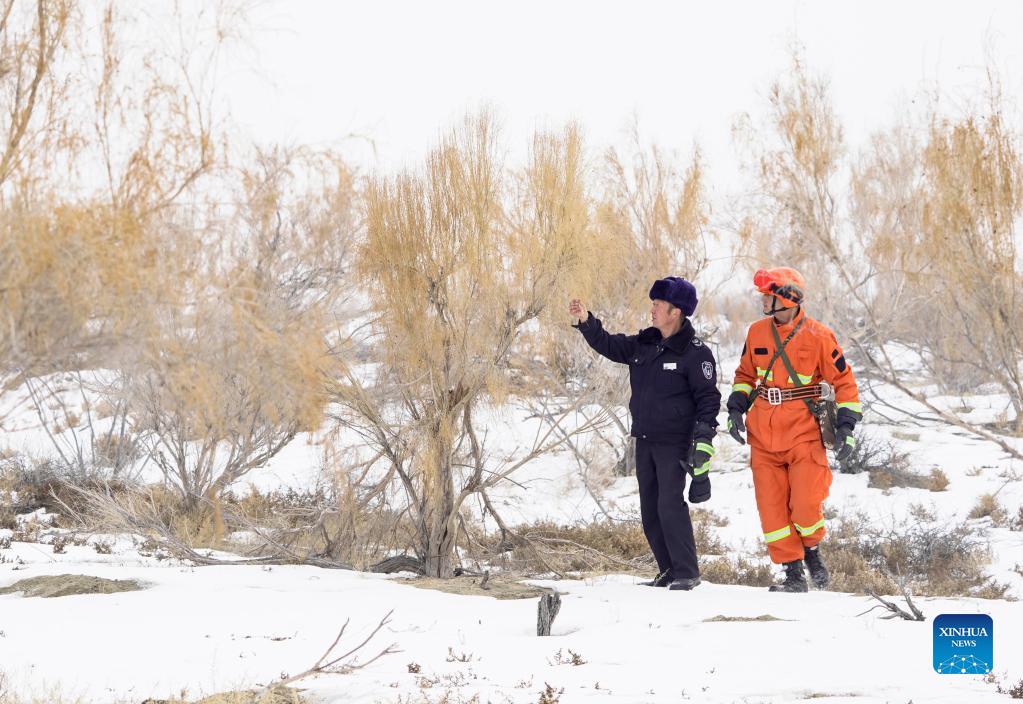
Staff member from a forest management and protection station, along with an emergency handling team of the Ganjia Lake forest region, check the growth of white saxaul trees in Wusu City of northwest China's Xinjiang Uygur Autonomous Region, Dec. 4, 2021. As winter approaches, authorities have been paying more attention to forest fire prevention in the Ganjia Lake forest region in the west of Junggar Basin. Forest rangers have also stepped up their patrolling efforts. In the Ganjia Lake forest region, there are 18 forest management and protection stations that are responsible for forest fireproofing, management of forest resources and grassland and wild animal protection. With improved transportation, staff members can now monitor a considerably larger area of woodland. The Ganjia Lake forest region, with an area of roughly 3,920,000 mu (about 2613.3 square kilometers) and over 110 plant species, serves as an important ecological protective screen for preventing land desertification. (Xinhua/Bai Zhiqiang)
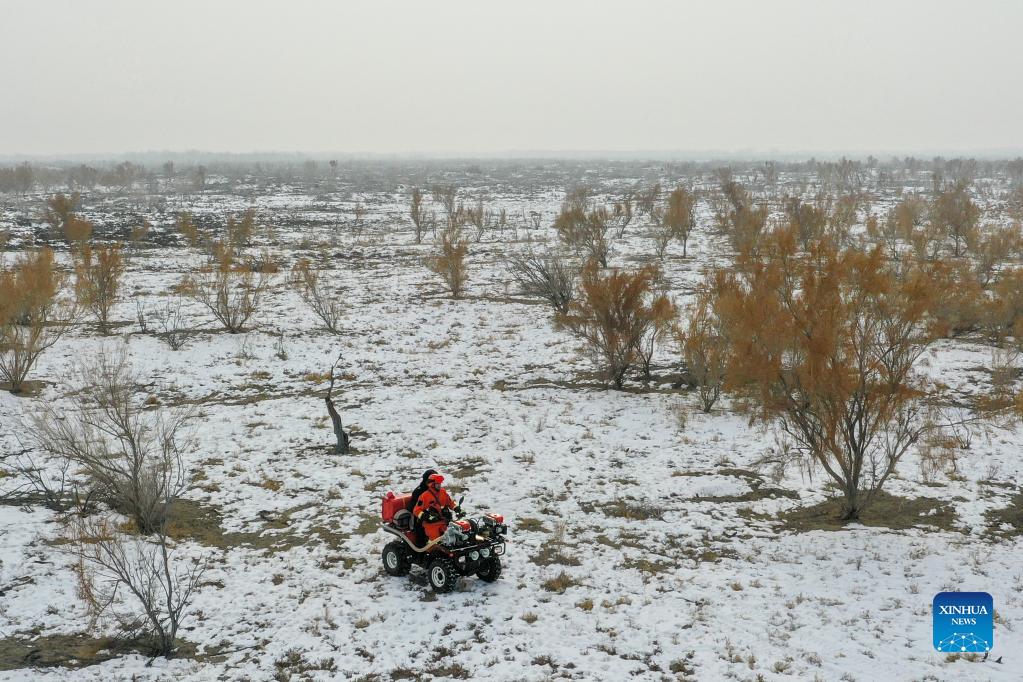
Aerial photo taken on Dec. 4, 2021 shows staff members patrolling the Ganjia Lake forest region in Wusu City of northwest China's Xinjiang Uygur Autonomous Region. As winter approaches, authorities have been paying more attention to forest fire prevention in the Ganjia Lake forest region in the west of Junggar Basin. Forest rangers have also stepped up their patrolling efforts. In the Ganjia Lake forest region, there are 18 forest management and protection stations that are responsible for forest fireproofing, management of forest resources and grassland and wild animal protection. With improved transportation, staff members can now monitor a considerably larger area of woodland. The Ganjia Lake forest region, with an area of roughly 3,920,000 mu (about 2613.3 square kilometers) and over 110 plant species, serves as an important ecological protective screen for preventing land desertification. (Xinhua/Zhao Ge)
Photos
Related Stories
- Xinjiang couple ride horses to Beijing to watch flag-raising ceremony
- Xinjiang sees bumper cotton harvest this year
- Traditional fabric making technique showcases the colors of life in Xinjiang
- Xinjiang residents refute Western "cultural genocide" fabrications
- Snow creates winter wonderland in Taklimakan Desert, NW China's Xinjiang
Copyright © 2021 People's Daily Online. All Rights Reserved.










